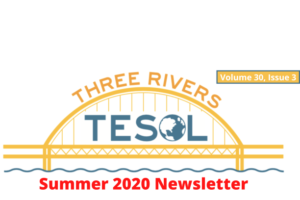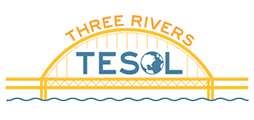 Information Literacy as an Important Component of ESL Writing Classes
Information Literacy as an Important Component of ESL Writing Classes
By Janine Carlock
 What is fact? What is opinion? With all of the information outlets available, writers struggle to determine what constitutes a valid source of information. For ESL students, this decision is made even more difficult because of language challenges and lack of cultural background knowledge. Moreover, the large amount of available information causes researchers to feel overwhelmed (Bawden & Robinson, 2009). Therefore, information literacy, that is, the ability to navigate the information environment, to conduct academic research in an iterative and exploratory way using appropriate tools, and then to evaluate the sources based on research needs, is crucial to ESL students’ future academic success.
What is fact? What is opinion? With all of the information outlets available, writers struggle to determine what constitutes a valid source of information. For ESL students, this decision is made even more difficult because of language challenges and lack of cultural background knowledge. Moreover, the large amount of available information causes researchers to feel overwhelmed (Bawden & Robinson, 2009). Therefore, information literacy, that is, the ability to navigate the information environment, to conduct academic research in an iterative and exploratory way using appropriate tools, and then to evaluate the sources based on research needs, is crucial to ESL students’ future academic success.
How can ESL instructors help students develop the skills necessary to do research well? The American College and Research Libraries (ACRL) has developed the Framework for Information Literacy in Higher Education, which ESL instructors can utilize to simultaneously increase student engagement and provide students with effective instruction in finding and incorporating research into academic research papers. As Farkas (2011) states, because the skills required to find and evaluate information have changed, what instructors teach must also change.
Traditional learning outcomes in an ESL writing curriculum may items such as: “Students must demonstrate the ability to paraphrase information from outside sources effectively and accurately;” “Students will use online databases to find sources;” “Students will write three essays in which they demonstrate their ability to find and evaluate and synthesize sources;” “Students will demonstrate familiarity with style conventions such as APA.” In order to meet these outcomes, students are often scheduled to meet once with a librarian to cover how to use databases and have one lesson on evaluating/synthesizing sources. However, they do not have a chance to practice these skills as skills on their own, they cannot truly learn to use them in the future.
So what skills specifically can writing teachers provide them with more opportunities to practice and how can they approach it?
- Before doing research on a topic, students must start with the ability to think flexibly about it. To do this, they must familiarize themselves with the conversation around the topic to help them understand various perspectives and so inform their own. This means providing them with opportunities to do a more general search, perhaps in Google Scholar and engaging with each other as the process occurs. To provide feedback, the teacher can have students model their search or discuss certain actions that worked well or not so well.
- Students must learn how to pull out key concepts that they have found to use in a database search (which they also will need space to become familiar with). This requires practice with a variety of topics to become familiar with the process.
- After finding sources, they will need to practice the skills needed to read and find information quickly – so the teacher can provide information about and examples of various academic genre conventions and then have students connect that information to the research activities they are doing in class.
- Students must build synthesis and paraphrasing skills for the sources that they do successfully find. Activities such as creating idea maps from the various sources (and labeling the map with citations so they remember where the ideas came from) and doing an annotated bibliography help students to clarify relationships and also make them more accountable for citation and referencing.
- Students must learn how to identify where bias may play a role in terms of the author’s perspective (and so use of language) and in terms of content. What is the author’s background? How can I find out? How can I look at this information to determine bias? How can I determine bias in terms of language or content?
Note that while I have focused on the learning in a writing class, such activities can be applied in other skills classes as well.
In conclusion, because in ESL classes the focus tends to be on the language outcomes, students are not provided the space to develop critical thinking skills that are inherently part of any academic project, skills that they will use throughout their university career. However, when students are given this space, when they are given the opportunity to apply skills in an integrated process, they become more engaged in the process and the language learning as well. Ultimately, by gaining more control over the research and writing process, they gain a sense of self-efficacy that they can take with them to their university classes.
Janine Carlock is the author of the recent book Developing Information Literacy Skills: A Guide to Finding, Evaluation and Citing Sources and an ESL instructor at Duquesne University.
Next Article: TESOL and Emergent Bilingualism
